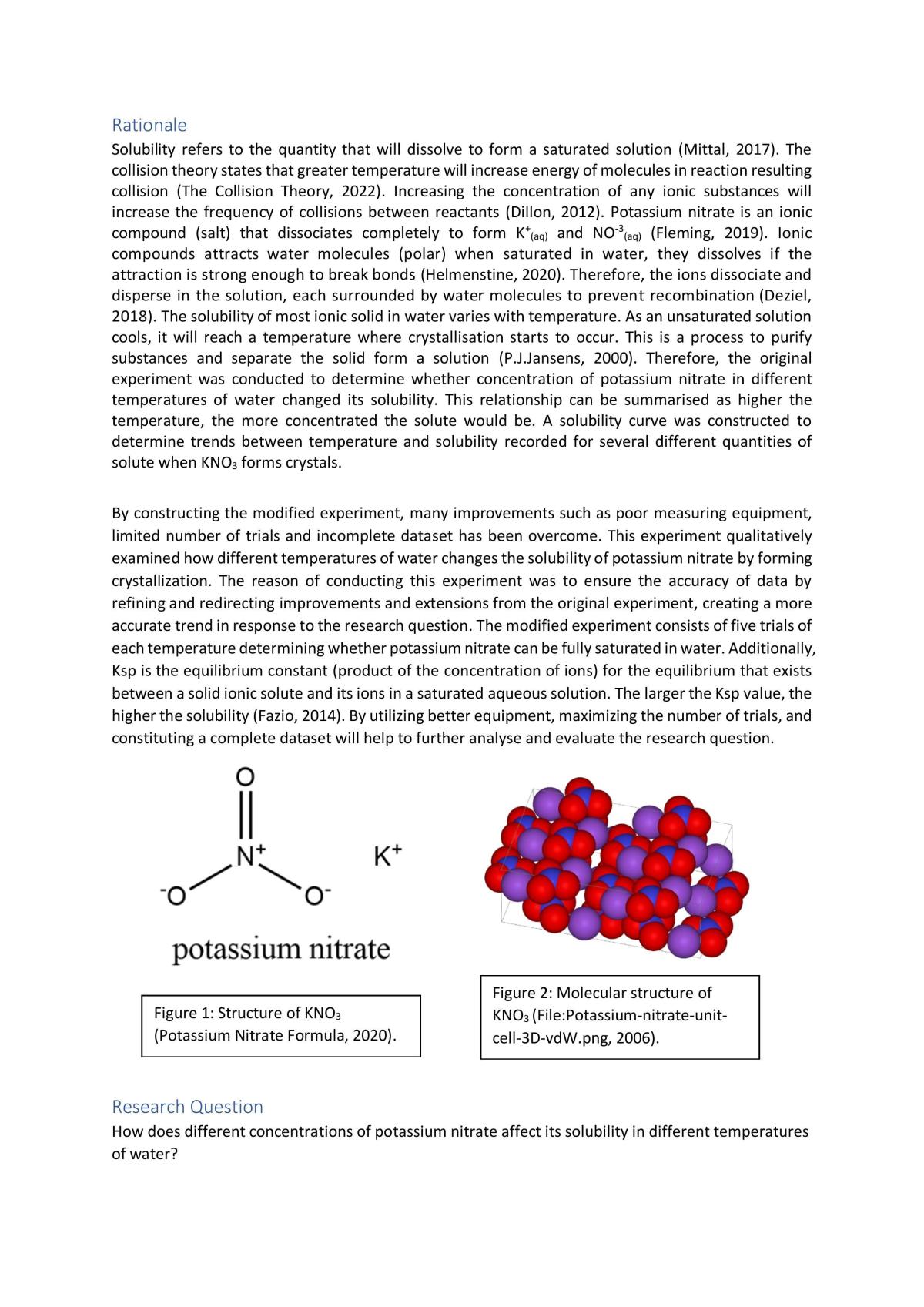Find
Search for over 200,000 study notes and past assignments!
Swap
Download study resources by swapping your own or buying Exchange Credits.
Study
Study from your library anywhere, anytime.
9 Pages • Essays / Projects • Year Uploaded: 2022
Solubility refers to the quantity that will dissolve to form a saturated solution (Mittal, 2017). The collision theory states that greater temperature will increase energy of molecules in reaction resulting collision (The Collision Theory, 2022). Increasing the concentration of any ionic substances will increase the frequency of collisions between reactants (Dillon, 2012). Potassium nitrate is an ionic compound (salt) that dissociates completely to form K+(aq) and NO-3(aq) (Fleming, 2019). Ionic compounds attracts water molecules (polar) when saturated in water, they dissolves if the attraction is strong enough to break bonds (Helmenstine, 2020). Therefore, the ions dissociate and disperse in the solution, each surrounded by water molecules to prevent recombination (Deziel, 2018). The solubility of most ionic solid in water varies with temperature. As an unsaturated solution cools, it will reach a temperature where crystallisation starts to occur. This is a process to purify substances and separate the solid form a solution (P.J.Jansens, 2000). Therefore, the original experiment was conducted to determine whether concentration of potassium nitrate in different temperatures of water changed its solubility. This relationship can be summarised as higher the temperature, the more concentrated the solute would be. A solubility curve was constructed to determine trends between temperature and solubility recorded for several different quantities of solute when KNO3 forms crystals.
This document is 30 Exchange Credits
More about this document:
|
|
This document has been hand checkedEvery document on Thinkswap has been carefully hand checked to make sure it's correctly described and categorised. No more browsing through piles of irrelevant study resources. |
|
|
This is an Essay / ProjectEssays / Projects are typically greater than 5 pages in length and are assessments that have been previously submitted by a student for academic grading. |
|
|
What are Exchange Credits?Exchange Credits represent the worth of each document on Thinkswap. In exchange for uploading documents you will receive Exchange Credits. These credits can then be used to download other documents for free. |
|
|
Satisfaction GuaranteeWe want you to be satisfied with your learning, that’s why all documents on Thinkswap are covered by our Satisfaction Guarantee. If a document is not of an acceptable quality or the document was incorrectly described or categorised, we will provide a full refund of Exchange Credits so that you can get another document. For more information please read Thinkswap's Satisfaction Guarantee. |

Studying with Academic Integrity
Studying from past student work is an amazing way to learn and research, however you must always act with academic integrity.
This document is the prior work of another student. Thinkswap has partnered with Turnitin to ensure students cannot copy directly from our resources. Understand how to responsibly use this work by visiting ‘Using Thinkswap resources correctly’.
Browse QCE Subjects




